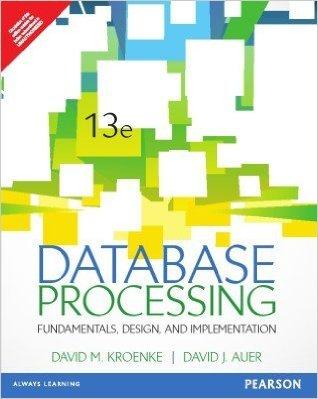Question
Use Python to finish an parser for the mini-command language in the Lecture Notes 1, extended with if-else commands, then it will be able to
Use Python to finish an parser for the mini-command language in the Lecture Notes 1, extended with if-else commands, then it will be able to parse a sample program looks like this:
===================================================
x = 2; while x : print x end; if (x + 1) : print x else print (x-9) end
=================================================== Here is the execution of this program: python run.py Type program; OK to do it on multiple lines; terminate with ! as the first symbol on a line by itself:
x = 2; while x : print x end; if (x + 1) : print x else print (x-9) end ! scanned program: ['x', '=', '2', ';', 'while', 'x', ':', 'print', 'x', 'end', ';', 'if', '(', 'x', '+', '1', ')', ':', 'print', 'x', 'else', 'print', '(', 'x', '-', '9', ')', 'end'] parsed program: [[['=', 'x', '2'], ['while', 'x', [['print', 'x']]], ['if', ['+', 'x', '1'], [['print', 'x']], [['print', ['-', 'x', '9']]]]]] press Enter key to finish The program is parsed into its tree. Here the grammar of the language we implement:
===================================================
PROGRAM ::= COMMANDLIST COMMANDLIST ::= COMMAND | COMMAND ; COMMANDLIST COMMAND ::= VAR = EXPRESSSION | print EXPRESSION | while EXPRESSION : COMMANDLIST end | if EXPRESSION : COMMANDLIST else COMMANDLIST end EXPRESSION ::= NUMERAL | VAR | ( EXPRESSION OPERATOR EXPRESSION ) OPERATOR is + or - NUMERAL is a sequence of digits from the set, {0,1,2,...,9} VAR is a string of lower-case letters, not a keyword
=================================================== A scanner essentially same as the one in Lecture Note 1 to build parse trees for this grammar has been provided, you job is to modify the parser so that it will parse if-else as well with grammar defined above. Abstract syntax tree (operator tree) format The parser will construct the list-represented tree for a program. The syntax of trees is this:
===================================================
PTREE ::= [ CLIST ] CLIST ::= [ CTREE+ ] where CTREE+ means one or more CTREEs CTREE ::= ["=", VAR, ETREE] | ["print", ETREE] | ["while", ETREE, CLIST] | ["if", ETREE, CLIST, CLIST] ETREE ::= NUMERAL | VAR | [OP, ETREE, ETREE] where OP is either "+" or "-"
=================================================== Notice how the trees match the grammar constructions. Since the trees are nested lists, it is easy to disassemble them and compute on their parts.
Step by Step Solution
There are 3 Steps involved in it
Step: 1

Get Instant Access to Expert-Tailored Solutions
See step-by-step solutions with expert insights and AI powered tools for academic success
Step: 2

Step: 3

Ace Your Homework with AI
Get the answers you need in no time with our AI-driven, step-by-step assistance
Get Started


